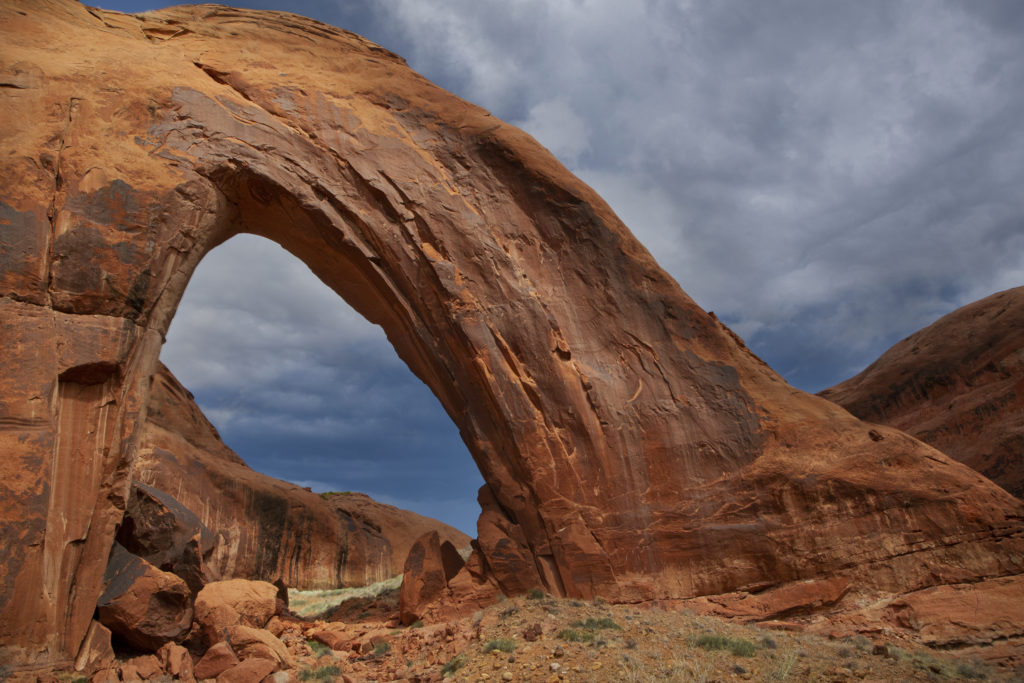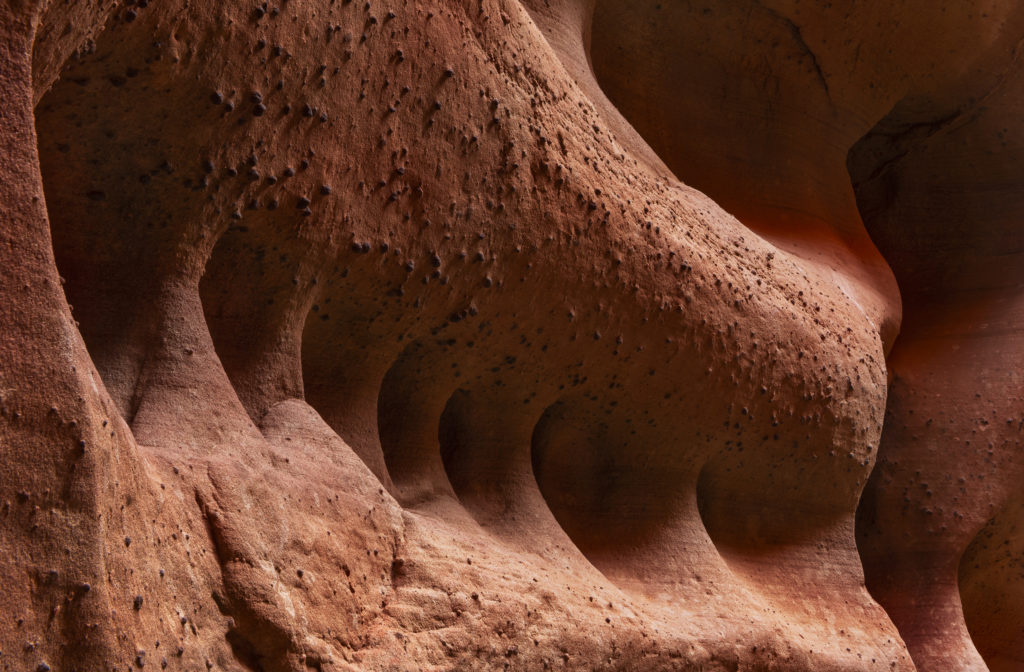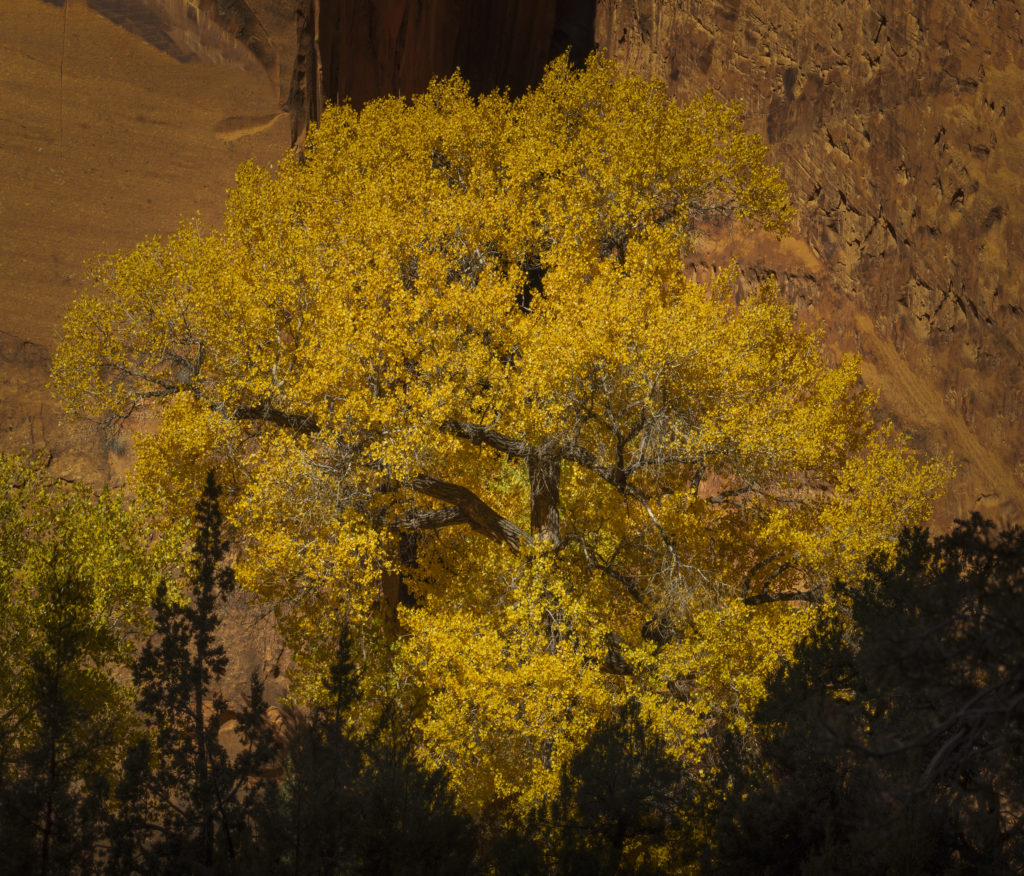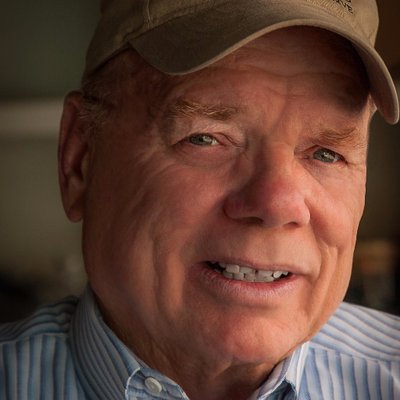The charm of the Grand Staircase-Escalante National Monument (GSENM) is phenomenal. It is a land of sun-drenched Utah backcountry filled with vibrant, multi-colored sandstone cliffs soaring above the creases of slot canyons and picturesque washes with endless slabs of tilted slickrock. Beyond the roads, and often far below the sky, one can find prehistoric village sites, abandoned Western movie sets, and many other treasures.
Grand Staircase-Escalante Art Photography
The Grand Staircase landscape is also one of those rare places for the landscape photographer seeking diverse self-expression opportunities. However, while self-expression can be exhilarating and deeply rewarding, it can also be profoundly disappointing when we try to use a handful of megapixels to interpret a land that is nearly 3,000 square miles in size. While our goal as an artist is to express our subjective thoughts, feelings, and perhaps our personality the photographic process fixes literal appearances on our sensors or film. Light-reflecting from landscape forms and objects — sky, ground, trees, rocks, waterfalls, etc.—seems to make photography more suitable for documentary images, rather than for creating expressive landscape art with an emotional range that is beyond the lens. This is because, in photography’s early days, the purpose of the camera was to document reality with remarkable accuracy.

Over time photographers moved the creative needle from documentary to narrative, and photographic art emerged from those early darkrooms. Compared to painters, writers, and other artists whose media allows them to conjure whatever concepts necessary to fit their expressive thoughts, but photographic artists work with a core subject captured from reality. Expressive photography requires an investment of emotion and perceptive effort beyond photographic tools and postproduction techniques. The art photographer needs to develop a degree of maturity and depth and an understanding of visual sense—specifically, how visual signals can be employed to extract known responses from viewers.
But how do you create work that captures the charm of the GSENM when you have 3,000 square miles of canyons, plains, arches, Hoodoos, and holes in the rock to choose from? Here are the steps we teach in our Masterclass.
1. Location Research
Grand Staircase Escalante is not so much a landscape structure as it is a narrative, one that is never legible in its vastness. In its millions of years of development, there is a liturgical logic mystery in this landscape. Our Masterclass selects locations that yield thematic opportunities for photographers to grab the hidden prayers of the Devil’s Garden and the spears of sunlight that jab the depths of Peek-a-Boo Canyon. After all, we are to create images that are a vision beyond documentation in a land barely documented.
Our photographic visual plans emphasize the Monument’s Escalante Section with its active waterfalls, arches, riparian oases, sculpted slickrock, and narrow canyons. This generates opportunities for art photographers who wish to understand and interpret the Escalante’s backcountry. In the remote Grand Staircase section, everything is about shadow, abstraction, and personal discovery as we work through networks of slot canyons and stand in gaping awe of the formations in the Kodachrome Basin State Park. Along the rugged and unpaved Cottonwood Canyon Road, we can photograph whitewashed formations that are a landscape synthesis of modern impressionism, and then we can find the moon and stars through a hole in the rock known as Grosvenor Arch.
2. Inspirational Visualization Rules the Day

No matter how much research and instructor assistance when we come to a new location, we see the landscape for the first time. Some scenes, light patterns will inspire us, and others will be ignored or overlooked on our first visit. Moreover, time of day and weather can change our inspiration reaction as well.
In the Grand Staircase, there are many inspirational moments that some refer to as an ‘ah-ha’ or ‘gobsmacked’ time. For example, everyone who has been in the Peek-a-Boo slot canyon feels compelled to squeeze the shutter at every twist and turn. But in our Masterclass, we teach photographers to slow down and internalize what they see with terms that articulate what they feel before arriving at a composition frame. Your photograph is a symbol for your feelings and for the things you wish to express—something that will evoke a desired response from your viewer. So, it is critical to visualize the image in terms of capture, postproduction approaches, and ultimately an image that is a vision beyond documentation.
3. Revisit Your Locations
It is difficult to find and grasp the visual cues of a place in one visit. A certain Hoodoo may be the ‘thing itself’ on the first visit, and the photographer’s art is one of seeking out and revealing that which is already there. But on a second visit, we may come to understand that the picture depicts is real but what the eye saw was an illusion and that the image has become a metaphor for the indigenous people who visited here before us. On a third visit, we may have developed a deeper connection and that we may wish to enhance in postproduction. In our NPPE Masterclasses, we visit some of our locations twice or three times and at different times of day to develop a deeper understanding of the subject and its inherent narrative.
4. Post-production
Consider the postproduction steps that you will take while still capturing the image(s). There may be none, a few, or many if you are repurposing the image. We often refer to this as post visualization, a process where we relive our capture experiences and create work beyond our lens. During our masterclasses, we spend time in postproduction classes growing our art with basic and advanced techniques.
Summary
The Grand Staircase Escalante National Monument is an isolated, only recently chartered land. For the photographer, there is a limit to our human power of observation as our eyes must rest between scenes that we cannot fully grasp by sight. And yet, it all feels familiar here.

There is this sense that one will know the gold that autumn will bring, and the green overlay of spring will fill our lens. Here the illegible narrative is a mixture of nestled cottonwoods and Hoodoo rocks that poke at the September nights where stars plant their applications for heaven. In the winter, the leaves become brittle underfoot, and a few rangers from the distant towns continue their decades-long duties of silently guarding the strength of this vast land. Some things are a constant until they settle in for a long sleep to become the memory of ‘the thing itself.’
This is why photographers come here.






